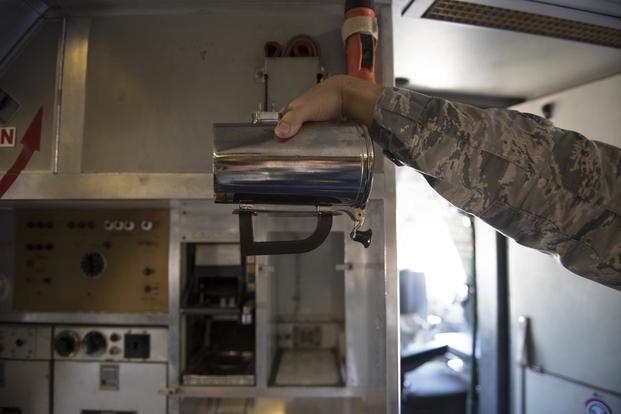modeltrains
Well-Known Member
- Joined
- Jun 29, 2011
- Messages
- 1,870
- Reaction score
- 756
Oh! Just remembered this bit of A-10 trivia. Will have to go looking to see what has come of it here several years later.
A-10 Warthog To Take On Oklahoma's Thunderstorms
Posted: Feb 05, 2015 7:50 PM CST Updated: Feb 06, 2015 7:05 AM CST
https://www.news9.com/story/28039187/a-10-warthog-to-take-on-oklahomas-thunderstorms
and
https://calhoun.nps.edu/handle/10945/51919
and
and
https://science.sciencemag.org/content/334/6057/747.full?rss=1
A-10 Warthog To Take On Oklahoma's Thunderstorms
Posted: Feb 05, 2015 7:50 PM CST Updated: Feb 06, 2015 7:05 AM CST
https://www.news9.com/story/28039187/a-10-warthog-to-take-on-oklahomas-thunderstorms
and
A suitable platform for storm penetration, risk analysis for the SPA-10 aircraft modification
Abstract
The SPA-10 project, sponsored by U.S. National Science Foundation, is to acquire and qualify a replacement for the retired T-28 “storm penetration” aircraft previously used to acquire meteorological data to enable understanding and modelling of mid-continent thunderstorms. The National Science Foundation selected the Fairchild A-10 (bailed from the U.S. Air Force) as the platform to be adapted to perform the storm penetration mission to altitudes of eleven kilometers, and funded Naval Postgraduate School’s Center for Interdisciplinary Remotely-Piloted Aircraft Studies (CIRPAS) as prime contractor. An expert panel conducted a review of the SPA-10 project in 2014 and recommended a risk analysis addressing hazards to the aircraft and pilots, such as icing, hail, turbulence and lightning. This paper presents the results of the risk analysis performed in response to this need, ...
https://calhoun.nps.edu/handle/10945/51919
and
https://webpages.sdsmt.edu/~adetwile/Updates on Development of the Storm-penetrating Thunderhog Research Aircraft
2 November 2016
The current status of the A-10 “Thunderhog” storm research aircraft is that it has been “demilitarized” (all combat and other military operations equipment removed), re-balanced for flight, and outfitted with a generous supply of research power. Additional work is needed to complete a de-icing system and other aeronautical modifications, provide for installation of data acquisition systems and mounting of instrumentation on the aircraft, and modernize the cockpit avionics and communications. Due to changes in the way research is managed at the Naval Postgraduate School, and other considerations, CIRPAS can no longer manage the project. At the end of September the aircraft was flown from the Zivco Aeronautics facility in Guthrie, OK, to the National Center for Atmospheric Research (NCAR) Research Aviation Facility in Broomfield, CO, where it will be stored while the National Science Foundation (NSF) decides how best to complete the project. In storage at CIRPAS is a large supply of spare parts, support equipment, and instrumentation that will support completion of the project, and ultimately, research operations. The time frame for the NSF decision is probably 6-9 months.
Below are two photos, ...
and
NSF to Turn Tank Killer Into Storm Chaser
See all authors and affiliations
- David Malakoff
Science 11 Nov 2011:
Vol. 334, Issue 6057, pp. 747
DOI: 10.1126/science.334.6057.747
The Thunderbolt, currently mothballed at a desert storage facility in Arizona, “will be completely taken apart and put back together for us,” says CIRPAS manager Robert Bluth. Mechanics will also remove the Thunderbolt's lethal, nose-mounted 30-millimeter cannon, creating “just a huge area for scientific instruments,” says NSF's James Huning, who has been coordinating the conversion. The plane also has plenty of “hard points” under the wings that, instead of holding missiles and bombs, will eventually carry sensors and instrument pods. NSF expects to spend a total of $13 million on the conversion.
Airborne instruments play a key role in scientists' efforts to understand and predict storms. Although researchers have long studied storm dynamics using ground-based radars, weather balloons, and aircraft that can fly above or below bad weather, “you really have to go right into the storm to get the most useful data,” says meteorologist Terry Schuur, who works at the National Oceanic and Atmospheric Administration's National Severe Storms Laboratory in Norman, Oklahoma. And just a select few aircraft are capable of penetrating the interiors of big convective storms, such as thunderstorms, that churn with enormous energy.
The new plane's capabilities are a wish come true for many atmospheric scientists, who will begin submitting proposals to NSF sometime next year. Schuur, for instance, wants to take advantage of the Thunderbolt's ability to attain an altitude of 11 kilometers (compared with 7 kilometers for the old T-28). That extra height means it can reach into the icy, supercooled tops of giant, anvil-shaped thunderheads and collect real-world data to improve computer models of how hail forms. (In tests, the A-10's engines were able to “inhale” nectarine-sized hail “and just keep going,” NSF's Huning says.)
https://science.sciencemag.org/content/334/6057/747.full?rss=1






